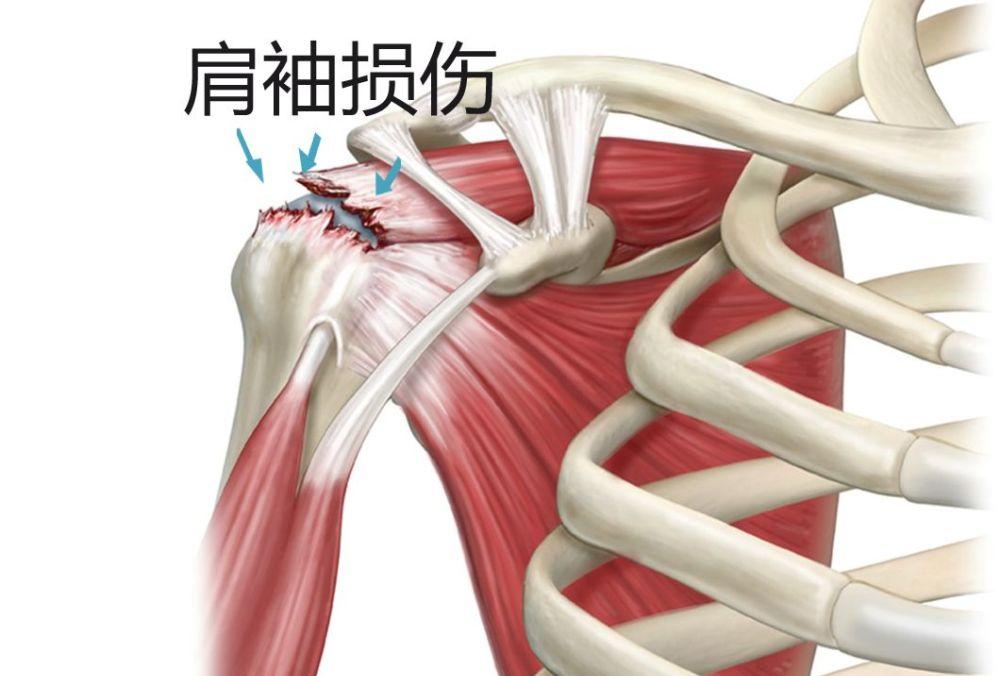Aunt Liu, 57, has been working on and off the computer room for a long time, and her right shoulder joint was in pain 2 years ago, especially when combing her hair and wearing and taking off clothes with buttons on her back. Aunt Liu thought it was shoulder arthritis, and listening to others say that frozen shoulder is to take the initiative to exercise, and the shoulder joint can be moved faster. So Aunt Liu did her own hand to climb the wall and hang the horizontal bar to forcibly move the shoulder joint, and the pain was not only not alleviated, but also aggravated, which seriously affected Aunt Liu's daily life.
Recently, Aunt Liu came to the Second People's Hospital of Hunan Province for diagnosis and treatment, and Wu Ke, deputy chief physician of the Department of Orthopedics and Joints of the Hospital, passed the physical examination and imaging examination, and Aunt Liu was quickly diagnosed with: rotator cuff injury!

Deputy Chief Physician Wu Ke explained that the shoulder pain of the middle-aged and elderly people is considered by many people to be "frozen shoulder", frozen shoulder is a self-limiting disease, if the shoulder joint pain does not heal for a long time, it is necessary to be vigilant about whether there are other problems. In fact, rotator cuff injuries are also one of the causes of shoulder pain in middle-aged and elderly people.
The rotator cuff is a sheath-like structure composed of the tendon parts of the superior, inferior, subscapula and small round muscles, which wraps around the oblioflaver joint, humerus head, and joint capsule, forming a similar sleeve-like muscle-like structure, which has the function of maintaining the stability of the humerus joint, maintaining various postures of the upper arm and completing various movements.
Rotator cuff injuries are more common in workers and athletes with repetitive shoulder joint movements, such as painting, tennis, swimming, volleyball, painting, etc., and the incidence increases with age. The main manifestations are neck and shoulder pain, shoulder joint weakness, and mobility impairment.
At present, more and more scholars believe that once the rotator cuff injury is diagnosed, it is advisable to make surgical repair as soon as possible and strive for the best time for diagnosis and treatment. Because with the prolongation of the course of the disease, the degree of rotator cuff injury will increase, the size of the injury will increase, and the tendon degeneration, and the quality of tendon will affect the postoperative rotator cuff healing.
After meticulous preoperative preparation, Wu Ke, deputy chief physician and team led by Chief Physician Li Baojun of the Department of Orthopedic Joints, performed minimally invasive acromial arthroscopy surgery for Aunt Liu, sutured to repair the rotator cuff, restore its function, relieve the patient's pain, and guide rehabilitation exercises to make her recover as soon as possible.
Chief Physician Li Baojun further reminded that ordinary people often confuse rotator cuff injuries with frozen shoulder, in fact, there is a big difference between the two. The main manifestations are: rotator cuff injury is mainly manifested in pain during shoulder joint activity, active abduction and upward lifting function is limited, and passive activity of the shoulder joint is OK. The symptoms of frozen shoulder are mostly periarthral pain with shoulder movement disorders, and both active and passive activities can limit the range of motion of the shoulder joint. The treatment modalities are also different.
Therefore, if the public has shoulder discomfort, they should seek medical treatment in time to clarify the diagnosis and then treat the symptoms, and avoid self-treatment, so as not to delay treatment.
Contributed by: Peng Yichuan, Department of Orthopedics and Joints, Second People's Hospital of Hunan Province
Editor: Shi Rong
Image: Partly from the Internet, invaded and deleted